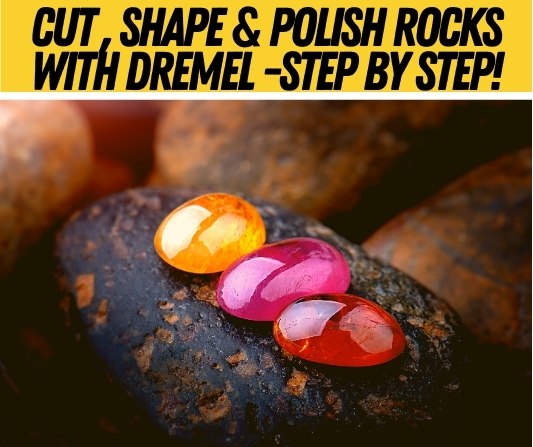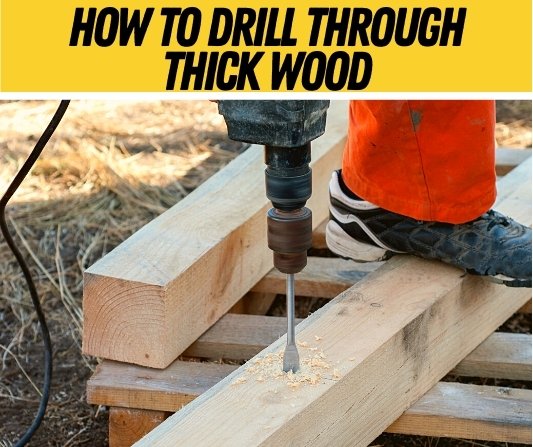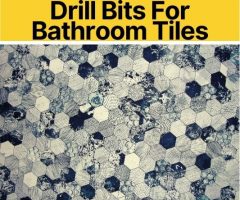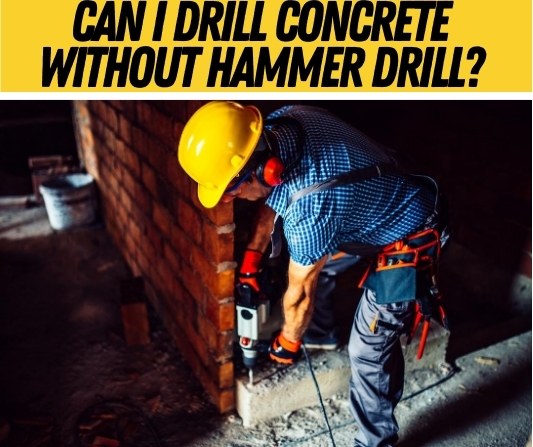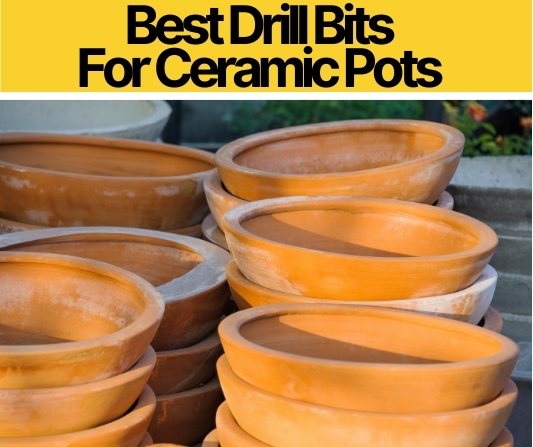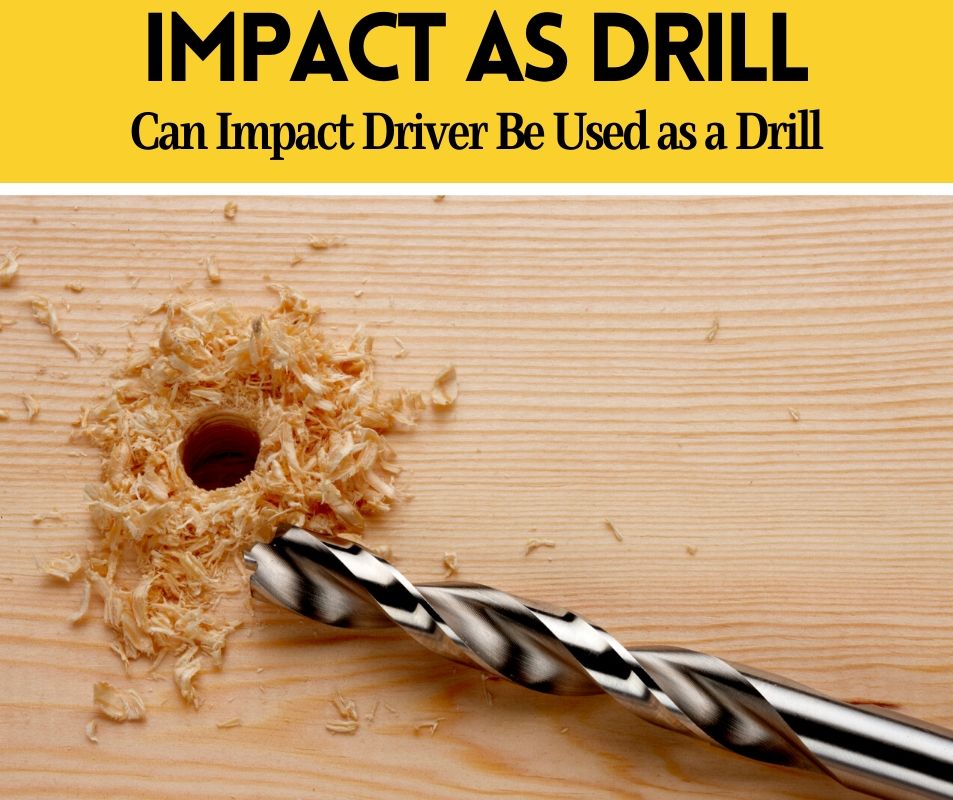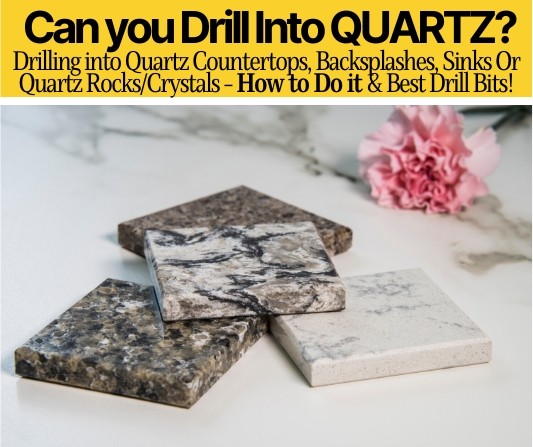 Quartz worktops are made of high-quality manufactured quartz crystals – even purer, harder, and more resistant to damage than those found in nature – crushed and formed into slabs bound together by resin.
Quartz worktops are made of high-quality manufactured quartz crystals – even purer, harder, and more resistant to damage than those found in nature – crushed and formed into slabs bound together by resin.
They are extremely durable, almost impossible to stain, and very easy to clean.
However, the same traits that give quartz these desirable qualities can also make it difficult to drill, whether you’re installing a new surface or adding a new fixture to an existing kitchen.
Can you Drill Into Quartz?
Yes with the right tools and the right approach you can drill into quartz. For quartz, that means a diamond-tipped drill bit designed for cutting very hard materials, and a cautious approach that keeps your workpiece and tools from overheating.
Quartz is an increasingly popular choice for kitchen worktops, often seen as a superior alternative to granite. The difficulty with drilling into quartz comes from the same quality that makes it such a sought-after material for kitchen surfaces: its hardness. Hardness is measured using the Mohs scale, a simple scale from 1 to 10. A material with a higher Mohs number will damage one with a lower number when they’re scratched against each other; for instance, pure iron (Mohs 4) will always scratch pure gold (Mohs 3).
When you bought your first drill, the multi-purpose bits you got with it were probably made of steel, which has a Mohs hardness of around 5 and is more than hard enough to cut through wood, masonry, and most metals. Quartz has a Mohs hardness of 7, meaning it will cut steel rather than the other way around. Take a steel drill bit to quartz and all you’ll do is dull the bit. However, the simple fact that quartz countertops exist implies that there are tools out there that can successfully cut it, since quartz crystals don’t naturally grow into convenient countertop shapes.
Quartz Drill Bits -What Kind do I need?
What you need for working with quartz (and other materials too hard for steel bits) is a bit tipped with the material that tops the hardness scale: diamond. Diamond is the hardest natural material on Earth, and can cut virtually anything; diamond itself is so resistant to damage from other materials it’s typically cut with a laser. It’s much harder than quartz and will cut through it with no trouble. Diamond drill bits are handy to have around for working with more than just quartz – they’ll also make short work of porcelain tiles, heavy glass, and hard stone like slate.
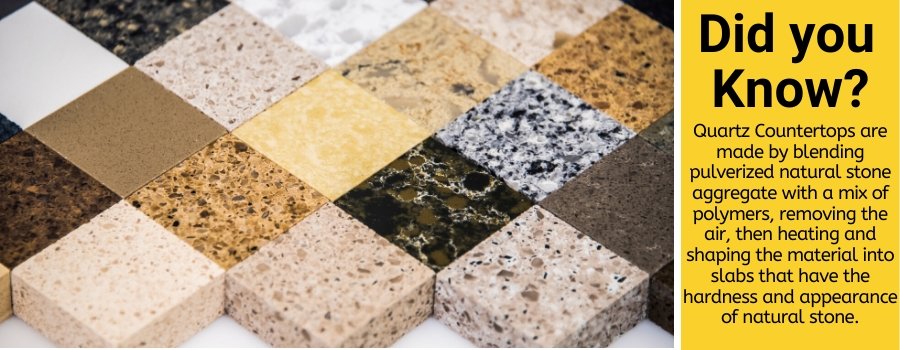
Diamond drill bits for drilling quartz
Although you can find diamond-tipped bits in the “corkscrew” shape you’re probably used to with other drill bits, hollow-core “hole” type bits will work much better. These have tiny bits of diamond embedded in the rough surface around the bottom edge, and will cut very clean circles out of quartz. Most bits of this type don’t have the center guide you might be used to with conventional wood hole saws, so you’ll also need an adjustable drill guide. This attaches firmly to the surface being drilled, usually with a suction cup or clamp, and helps keep your bit in the right position.
You’re probably used to thinking of diamond as an expensive material, but don’t worry, diamond-tipped tools aren’t going to run into engagement ring price territory. The tiny diamond particles that diamond drill bits are tipped with don’t carry the price premium of high-clarity cut and finished gems.
Examples of good quartz drill bits
Highly rated sets of diamond-tipped drill bits can be bought for $20 to $30 on Amazon. As always when shopping for tools online, it’s a good idea to check customer reviews, and specifically to look for reviews from people who’ve successfully used the item for something similar to your intended use, before making a purchase decision. Avoid sets with no or low ratings, as some cheaply made bits may have very low diamond content and make the process of drilling quartz much slower or more difficult. If you’ve already purchased the item (a faucet, for instance) that you need to install in your countertop, make sure the bit set you choose includes bits in sizes that match the holes you need to make.
Read more: Best Drill Bits for Ceramic Pots
How to drill into quartz countertops
Once you have the right tool, drilling quartz countertops is fairly easy. First, mark the spot you need to drill, and attach the guide using the suction cup mount. Check the size of hole you need to make, and put the matching bit on your drill. Adjust the guide so the bit just fits without being able to move around, lock it in place, and start drilling.
Once you’ve started drilling, there’s one very important consideration that you might not be used to from drilling other materials: heat. The extreme friction between two very dense materials will create a lot of heat, enough to damage the countertop, your tool, or both. The metal parts of the drill bit above the diamond coating might even start to soften and warp, and you could burn your hands on them. The best way to avoid heating up your tool and work surface too much is to go slowly. Turn the speed on your drill down, and drill a few millimeters in at a time, taking breaks between each stage to let everything cool down. Putting some water on your work surface before drilling will also help keep everything cool.
Drilling a faucet hole – what should you be aware of?
If you’re looking to attach a faucet, you’ll probably need to drill three holes – one for the faucet itself, and one each for the hot and cold taps. These may all be the same size, or the taps may be one size and the faucet another. Make sure you check the sizes, and use a template to mark the spots you need to drill – the last thing you want to do is ruin your countertop by drilling holes that aren’t quite in the right positions for your new faucet.
A drilling template is just a piece of paper with the holes you need to make marked on it in the proper sizes and relative locations. It’s fairly common for one to be included with the installation instructions for a new faucet. If one hasn’t been included with your faucet, you can take a piece of paper, place it against the bottom of the faucet, and make holes in it where the pipes need to attach.
Tape the template to the countertop and make sure it’s firmly attached, then grab your guide and drill bit and start on the first hole. You’ll be drilling through the paper before you get to the quartz itself, but that won’t cause any problems. After each hole, make sure the template is still properly aligned before starting on the next.
Also read: How to Remove a Faucet Aerator Without a Key
Drilling a hole for a soap dispenser – what should you be aware of?
Something simpler like a soap dispenser might just require one small hole. Don’t let that make you complacent about double-checking your measurements first, though – you still need to make sure you’re making the hole in a place where the dispenser will actually fit. Position the soap dispenser where you want it to sit on the counter, and mark the point where the hole needs to be made with a bit of chalk or a piece of tape. Then start setting up your guide.
How to drill into a quartz backsplash
Drilling into a backsplash is much the same as drilling into a countertop, although it won’t be quite as easy simply due to the angle. For one thing, it will be harder to use water to manage heat buildup as the water will drip down the surface instead of staying on your work area. Since you can’t just leave water sitting on a vertical surface to soak up heat, you’ll need to actively rinse the tool and work surface with water repeatedly as you drill. A spray bottle may be handy for this.
Gravity will also be working against your guide staying in place, so make sure it’s firmly attached; if the suction cup isn’t strong enough on its own, some double-sided tape will help.
All in all, if you’re installing a brand new backsplash, it might be easier to drill the holes before attaching the backsplash to the wall. Just make sure you put something under it while you’re working that you don’t mind damaging when the drill makes it all the way through the quartz – a spare piece of plywood works fine.
How to drill a hole in a quartz sink
Drilling a hole in a quartz sink – for instance, if you need to enlarge the faucet or drain hole – can present a challenge finding space for your bit guide if the faucet holes are too close to the wall at the back of your counter, or if the drain hole is too close to the side of the sink itself. You may need to look for a guide with a smaller footprint.
In extreme cases, you may even find your drill itself has trouble fitting. You can safely use an extension bit as long as you’re careful not to put too much downward pressure on the tool.
How to drill into quartz rock/crystal
Drilling a hole in a natural quartz crystal is something you might want to do to make something more decorative than kitchen counters – a pendant, for example. This is a harder and more delicate task than drilling into a flat surface, but certainly not impossible. The biggest source of difficulty here will be keeping the crystal stationary. Wrap the crystal in a wet cloth, leaving only the area being drilled exposed, and clamp it in a bench vice as tightly as you can.
Also Read: How to Cut,Shape & Polish Rocks
You’re not likely to be able to use a guide here at all, so you’ll have to hold your drill very steady and use light pressure to avoid it sliding around on the crystal. Drill straight down into a flat face of the crystal, and don’t push down too hard on the drill – it won’t make the process go faster anyway, and it will make you more likely to slip. Put water on the bit regularly to keep it cool.
General safety tips
Working with very hard materials like quartz carries some risk. As your drill hits natural fracture points in the crystal, small shards of quartz may break off and fly away from the work surface. These shards are extremely sharp, so you should wear eye protection at all times.

